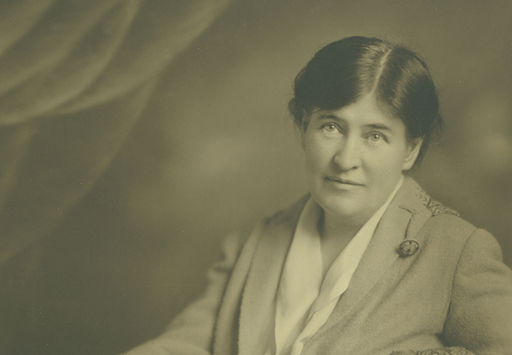Closing In on Cather
What distinguishes this biography is its recurrence to the writer’s own extraordinary assessment of her successes and failures.

‘Chasing Bright Medusas: A Life of Willa Cather’
By Benjamin Taylor
Viking, 192 pages
To an old friend, Willa Cather wrote, “What a lot of life one uses up chasing ‘bright Medusas,’ doesn’t one?” “Youth and the Bright Medusa” is also the title of one of her books, a story collection (1920).
As to Benjamin Taylor’s title, we have to guess its meaning for ourselves. Do a web search for Medusa and among other things you will learn is that she was a beautiful woman turned into a monster. In Cather’s lexicon, Medusa is the muse, and the pursuit of art, which rarely turned out exactly as Cather had imagined. Although Mr. Taylor has his own bright things to say about Cather’s work, what distinguishes this biography is its recurrence to Cather’s own extraordinary assessment of her successes and failures.
Just after she completed “The Song of the Lark” (1915), she wrote to her editor at Houghton-Mifflin: “I tell you I’ve got it, this time!” Later she wasn’t so sure: “The novel, for a long while, has been over-furnished. The property-man has been so busy on its pages, the importance of material objects and their vivid presentation have been so stressed, that we take it for granted whoever can observe, and can write the English language can write a novel. Often the latter qualification is considered unnecessary.”
Mr. Taylor is not so sure Cather is correct, calling “The Song of the Lark,” the story of an artist, a “strong work … carried through with conviction and finesse.”
Certain novels, such as “O Pioneers” (1913) and “My Ántonia” (1918), dramatize the grim realities of rural and farm life. In the later novel, narrator Jim Burden recalls his love for Ántonia that he missed having even as he possesses “the precious, the incommunicable past,” which is, you might say, the bright Medusa he has sought in the figure of a woman.
This perfect, wistful novel, which evokes the elusive nature of art, is bound to crop up almost anywhere, including Douglas Sirk’s “The Tarnished Angels” (1957), depicting the film’s yearning heroine, played beautifully by Dorothy Malone, who is as alone in her plight as the woman Jim Burden pines after.
In “The Professor’s House” (1925), Mr. Taylor discerns a “far deeper sounding of herself” in Cather’s creation of the professor, whose critics detect a trajectory similar to her own career, as he is “timidly reviewed by other professors of history, in technical and educational journals. Nobody saw that he was trying to do something quite different—they merely thought that he was trying to do the usual thing, and had not succeeded very well. … With the fourth volume he began to be aware that a few young men, scattered about the United States and England, were intensely interested in his experiment. With the fifth and sixth, they began to express their interest in lectures and in print. The two last volumes brought him a certain international reputation and what were called rewards—among them, the Oxford Prize for history.”
Cather’s view of herself and of her award-winning art was historical, so she was never deflected by the concerns of the present even when she was writing about it, as in her Pulitzer Prize-winning war novel, “One of Ours,” (1922). Critics who thought she was trying to be trendy annoyed her: “They insist that I could not resist the temptation to be a big bow-bow about the War. ‘The other books were personal, this is external’ they say!! Of course the people who are for it are just as hot, but they are rather a new crowd, not the old friends I liked to please. I always hate to lose old friends. Well, we never get anything for nothing, in life or in art. I gained a great deal in mere technique in that book—and I lose my friends.”
Critics failed to appreciate the novel’s “elegiac grief,” to use Mr. Taylor’s phrase. He proposes that “One of Ours” should be read alongside “A Farewell to Arms,” even though Hemingway scorned Cather’s novel. I suppose it was what she expected after chasing her bright medusas.
I’ve seldom read a biography that is so suited to the voice of its subject, allowing her to have her say while chiming in as though the biographer is a natural part of the story.
Mr. Rollyson is the author of “Lives of the Novelists.”

